Native to South Africa, the gorgeous geranium is as well known for its beauty as it is for its fragrant foliage. Contrary to popular belief, it’s not the flowers you’re smelling, but the foliage.
These flowers are easy to grow, very tolerant when it comes to droughts, and entirely edible. As a result, there is absolutely no reason you shouldn’t try your green thumb at growing some this year.
Here is a complete guide on how to plant geraniums, care for them, deadhead them, what are the easiest types to grow in your garden.
Geranium Flower Card
| Origin: | South Africa |
| Common name: | Geranium |
| Scientific name: | Pelargonium |
| Family: | Geraniaceae |
| Genus: | Geranium |
| Order: | Geraniales |
| Height: | 6 to 12 inches 1 to 3 feet |
| Blooms: | The blooms vary according to type and they can reach between 6 and 36 inches in diameter. |
| Colors: | They come in all colors which include the common white, pink, red, and mixed but also the rarer orange and purple. |
| Foliage: | They are circular and broad and are often very scented. |
Where Do Geraniums Come From?
It’s widely believed that some of the first and early forms of geraniums arrived by sea from the Cape of Good Hope to England a few centuries ago.
In 1841, after the Napoleonic Wars, the English took control of the Cape of Good Hope and the beautiful flowers found their way back to Britain. A British botanical magazine recorded them under the name “Sweet Geraniaceae.”
However, because the weather conditions in England differed vastly from those in the Cape of Good Hope, these flowers were mostly grown in greenhouses.
Otherwise, they were seen as annual plants that only grew in the summertime.
From England, they spread to America as many migrants moved there. The flowers found a welcoming home in the hot sun of California, where they thrive to this day.
The same scenario repeated itself as migrants from England took geraniums to Australia, where the flowers blossomed.
The number of geraniums rapidly grew in Australia after the Second World War. Not only that, but new types were grown and annual shows were organized to display them.
After the 1950s, people in England fell in love with the foliage of the plant rather than the actual flowers.
Discovering how fancy and sweet-smelling the leaves could be, growers started to remove the flowers to allow the leaves to develop better.
In this way, they created new and more colorful varieties that still exist today.
Types of Geraniums
If you want to plant these flowers in your garden, you might be a little overwhelmed seeing as there are over 400 hundred different types available.
However, to make matters a little simpler, geraniums can be divided into four main categories.
For each one, here are some examples of the most beautiful varieties you can enjoy in your backyard.
Zonal Geraniums (Pelargonium x hortorum)
These are the common, garden geraniums. They are called zonal because of the colored bands or zones you can see on their leaves.
This category alone contains hundreds of species that bloom into ball-like clusters.
They come in pink, white, red, salmon, orange, and lavender. One single plant can produce multiple ball clusters at the same time.
Some popular varieties include:
- Maverick
- Orbit
- Regalia
- Bandit
- Black Magic
Martha Washington (Pelargonium domesticum)
These produce the largest blooms of all. The flowers themselves are bi-colored, which means that the center is darker in color and it lightens as it comes to the edges.
The most common color combinations you will find for your garden are red and pink, pink and white, purple and lavender, magenta and pink, as well as crimson as red.
The most interesting thing about this type of geraniums is that they love cold weather. Their blooms usually appear early in the spring and in late summer toward fall.
They are best for people who live in colder climates.
Ivy Leaf Geraniums (Pelargonium peltatum)
Also known as Pelargonium peltatum, Ivy leaf geraniums are best for window boxes, planters, and hanging boxes.
They have trailing stems as well as thick and glossy leaves reminiscent of ivy, which is why allowing them to cascade from a window box or hanging planter will display these gorgeous flowers best.
However, you also have to be aware that, as beautiful as their foliage is, it’s also very thin. As a result, you will have to plant three or even more in a group.
When in bloom, Ivy leaf varieties produce purple, red, and pink blossoms that thrive throughout summer.
As opposed to other varieties that love dry environments, these adore water and moisture and you can place them close to water features.
Tip: Keep the soil moist for them to thrive.
Scented-leaf Geraniums (Pelargonium quercifolium)
They yield the smallest flowers of all known geraniums. However, that has never been a problem for gardeners because these flowers are usually grown for their foliage alone.
Their leaves smell incredibly, which is why they are such a joy to have in a flower garden.
Depending on the type you choose, they can smell like citrus, various spices, roses, mint, or even chocolate!
Geranium Flower Meaning
Like most flowers, geraniums carry their own meanings, which can vary quite a lot depending on the variety in question.
For example, the horseshoe geranium stands for folly while the ivy geranium with its gorgeous tendrils is a symbol for favors.
The lemon-scented geranium stands for an unexpected meeting while the oak leaf variety means true friendship when you gift it to someone you love.
Best Geranium Seeds
As mentioned earlier, all geraniums are quite easy to grow. This means that, when you go about choosing which types are best suited for your own garden, you can pick flowers based on their looks.
Maverick Appleblossoms
So called because they produce beautiful white blooms with soft, pink centers that look exactly like apple blossoms, these seeds are perfect if you also have apple trees in your garden for a mirror theme.
Maverick Coral
These come in a rare tropical shade of coral-orange that will add a splash of happiness to your garden.
Maverick Quicksilver
Contrary to their name, these beauties are not silver. In fact, they are very similar to lilac, but they bloom for far longer.
Moulin Rouge
You can guess what color these come in based on the name alone. These produce rich, red velvet flowers that create an outstanding landscape.
How to Grow Geraniums
The good news for every gardening enthusiast out there, but most of all for beginners is that geraniums are very easy to grow.
It doesn’t matter what type you are planning to plant or whether you do it in pots, containers, or plant them straight into the ground–these flowers won’t be a bother!
Here are some useful tips for growing healthy and beautiful plants without any hassle.
Growing Geraniums from Seed
The major advantage of growing these flowers from seed is that they have a higher resistance to diseases as well as a better tolerance to heat. Plus, they yield more flowers.
On the downside, you’ll notice that they are somewhat smaller. Apart from that, you need to arm yourself with as much patience as you can muster.
Fact: On average, it will take some 16 weeks for this plant to go from seed to flower.
Geranium Growing Instructions
Here are the steps you need to follow to grow these beautiful flowers from seed.
Step 1 – Germinate the Seeds Using Starting Mix

If you have used your flats or containers before, disinfect them before starting this process. This will ensure they will not mold.
Fill your trays using a moistened medium.
Step 2 – Sow the Seeds as Evenly As You Can
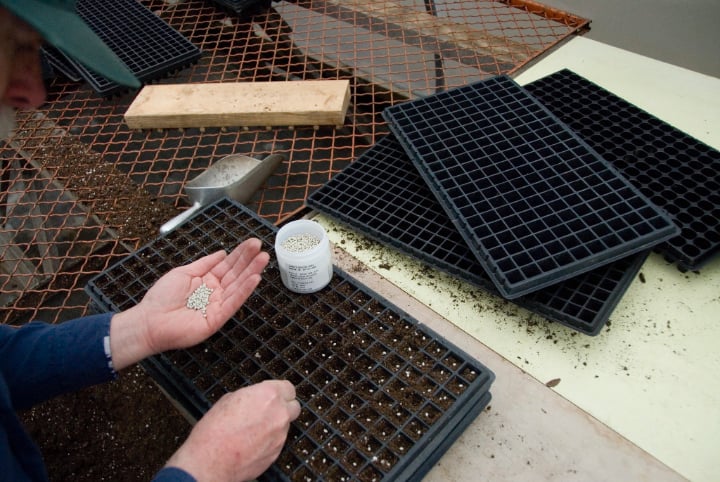
Make sure to add a layer of medium on top of the geranium seeds.
Step 3 – Cover Your Tay or Flat with Some Clear Plastic Film Wrap

Place your tray in bright light as the seeds require a temperature of at least 72° Fahrenheit for the germination process to begin.
Step 4 – Check on the Seeds Every Day
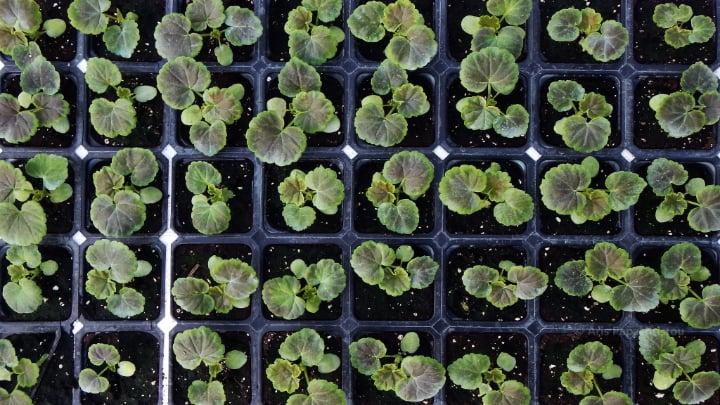
You want to remove the plastic cover every single day to allow moisture to escape.
Step 5 – Move the Seeds at the Right Time
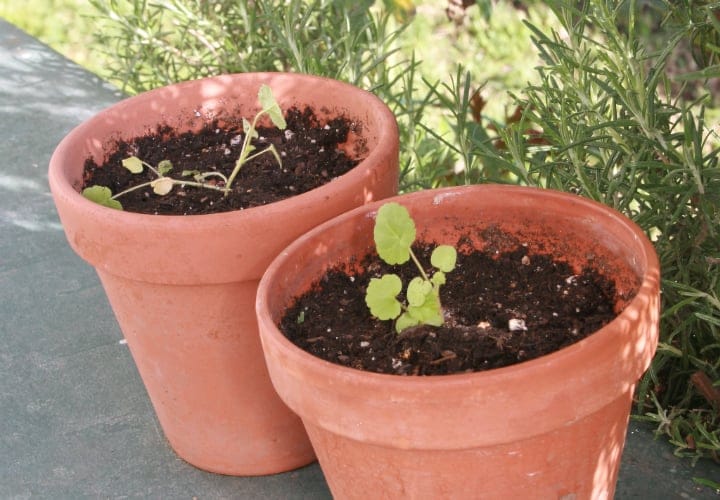
You can move the seedlings to a larger container once you notice two sets of leaves growing on them.
Step 6 – Water the Plant
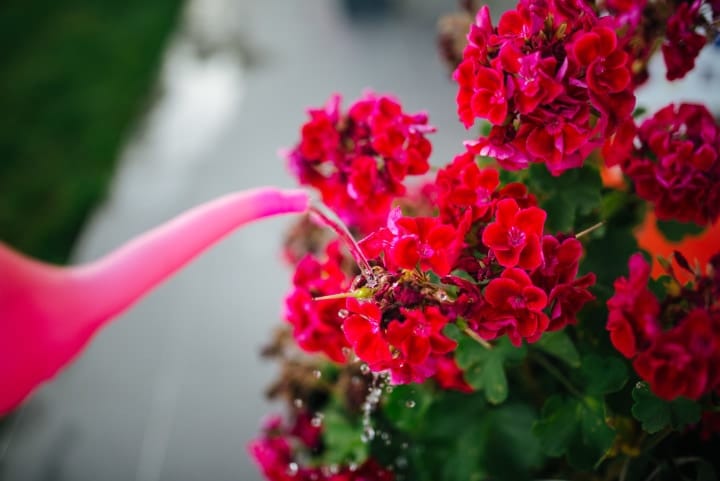
Water them only when the surface of the soil feels dry upon touching it. You can also opt for self-watering planters if you lead a busy life.
Geranium Care: How to Overwinter Geraniums
As we’ve already seen, because they come from such a hot climate, these flowers thrive mostly in summertime.
When the cold season comes, you will have to pay special attention to them. So, what exactly do you have to do?
Step 1 – Check the Weather Forecast
Start this process before the first frost falls. This is important for the plants to overwinter well.
Step 2 – Lift the Geraniums
Using a short and very sharp knife, cut the stems until they are 6 or 8 inches tall.
Step 3 – Make a Nice Cut
The reason for this cut is that geraniums do not have the power to support massive foliage in a low sunlight environment, especially when they can’t get enough heat.
If you want, you can save some stems as they will make it easier for you to multiply your plants later on.
Step 4 – Repot the Mother Plant
Take the “mother plant” meaning what’s left from the cutting out of the soil and repot it in the smallest pot you can find.
It should be just enough to cover its roots. You can use regular soil to fill it up.
Step 5 – Keep the New Flowers In a Shady Spot
Do this for a week. After, find for them a sunny place that is also cool. Remember that geraniums love sunlight even in winter!
During the cold season, these plants thrive when grown between 50° to 60°F (10° to 16°C).
This is what we call night temperatures. However, they will also survive a drop in temperature down to 0 degrees should that happen.
Tip: The key is to keep them as dry as possible.
Step 6 – Remove Old Leaves
If you see any growth appearing, make sure to cut the old leaves out. During wintertime, the plant won’t be able to support both.
How to Deadhead Geraniums
When it comes to annual varieties, deadheading these plants can encourage them to produce new flowers on a continual basis as long as you perform this task right before the seeds start to form.
The reason is that the plant begins to form new flowers in an attempt to spread its seeds.
Deadheading at the right time encourages it to stay active and bloom continuously. Not to mention just how easy it is to do.
Here are the steps you need to follow.
Step 1 – Check the Flowers After Blooming
After blooming begins, check your geranium flowers for withered or faded heads. If you need to, separate all the clusters by hand to make sure you have located all the old blooms.
Perform this task as carefully as you can so as not to disturb the new ones.
Step 2 – Cut the Stalks
Using bypass pruners, cut the stalks of the faded flowers as close to the base as possible.
If you prefer it or if you don’t have a set of pruners, you can also do it by hand. Do not cut the crown of the flower so as to keep the even appearance of the cluster.
Step 3 – Fertilize the Flowers
When you’re done, feed your flowers with a liquid fertilizer. You can do this every two weeks, but no more than that! It will encourage beautiful blooms!
You can deadhead your geraniums every time you consider it is necessary. It’s usually best to stop this process when the first frost hits and resume it in the summertime.
Geraniums Frequently Asked Questions
Thinking of growing geraniums? Here are some common questions we’ve been hearing about these plants. Check out the answer for a better understanding of these gorgeous plants.
Do geraniums come back every year?

Geraniums can be annuals or perennials. Some varieties survive tough winters and come back to life every spring. Learn now how to grow geraniums.
Do geraniums prefer sun or shade?

Most geranium types like the sun with the exception of ivy geraniums, which grow better in light shade. As a general rule, perennials that come back every year can grow more easily even if they don’t get full sun.
How long do geraniums last?
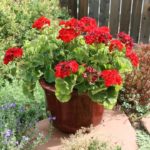
Geraniums can last for as long as 40 years if you take proper care of them but their longevity depends on the quality of the variety you choose. For best results, you may have to deadhead, move, or replace your plants.
How do I care for geraniums?

Geraniums are easy to care for in that they require watering only when dry and don’t need much fertilizing. You do have to deadhead them and prepare them for winter. Follow our geranium care guide for more tips.
Growing Geraniums Really Is This Easy
As we’ve seen, geraniums are, without a doubt, some of the easiest flowers to grow in your garden, in a container or a window box.
They can withstand both droughts and zero temperatures, and they are very easy to care for once you know how to deadhead and overwinter them.
And, in return, you get a garden full of sweet-smelling flowers that look like paradise.
So, all things considered, these flowers are really worth a place in your garden.
Which variety of geranium do you plan on growing next? And have you grown any so far?
Write to us using the comments section below.
Plant your geraniums well!

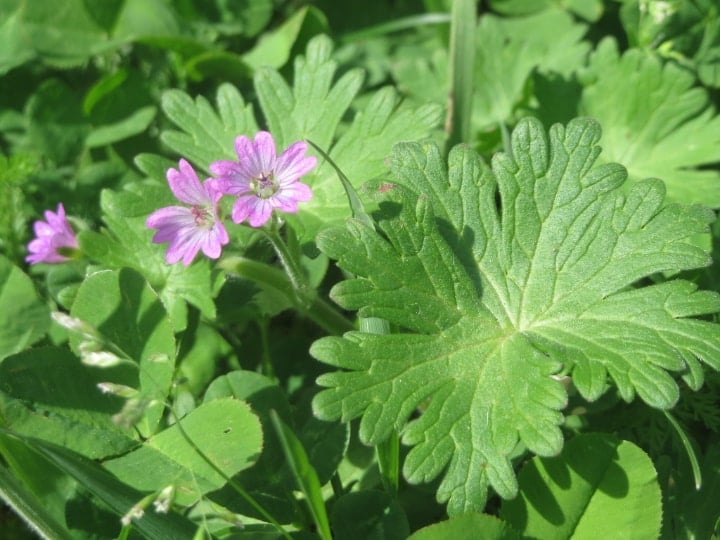
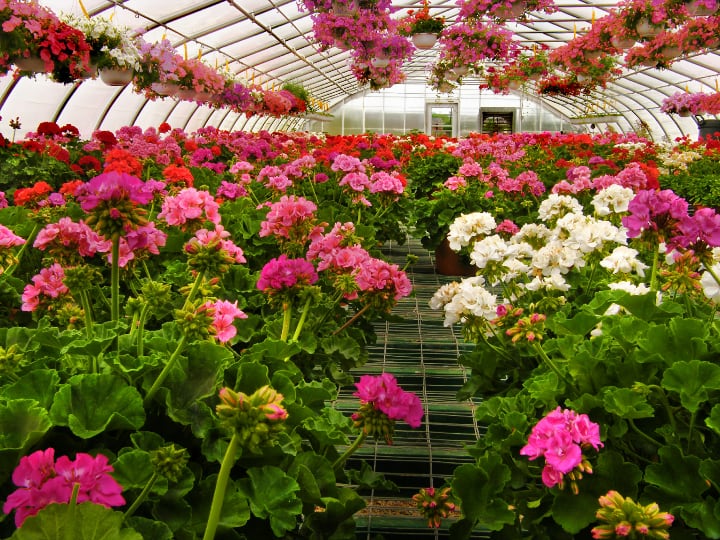
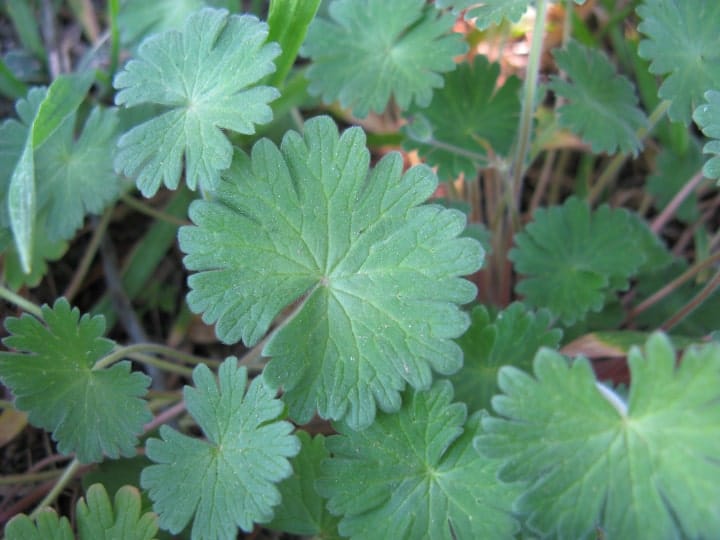
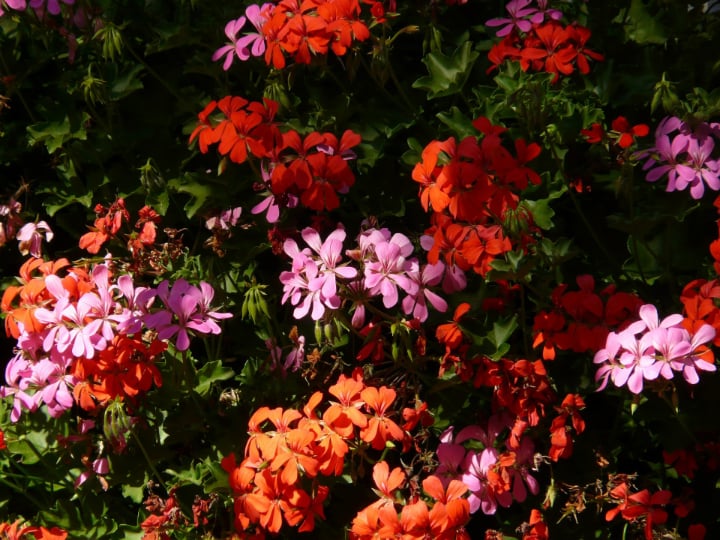
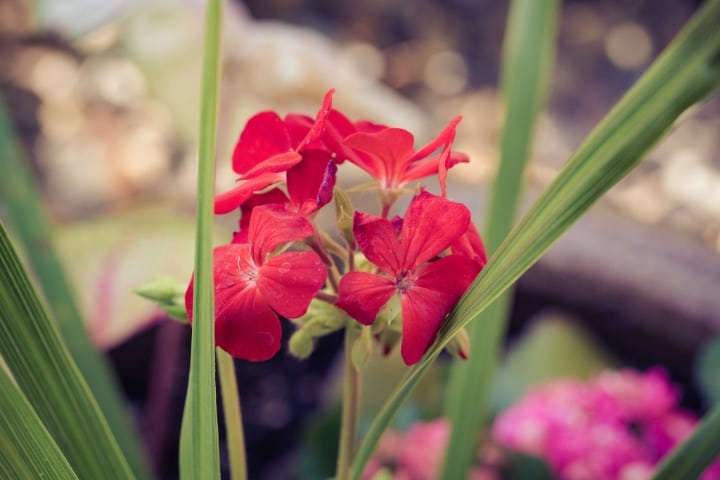
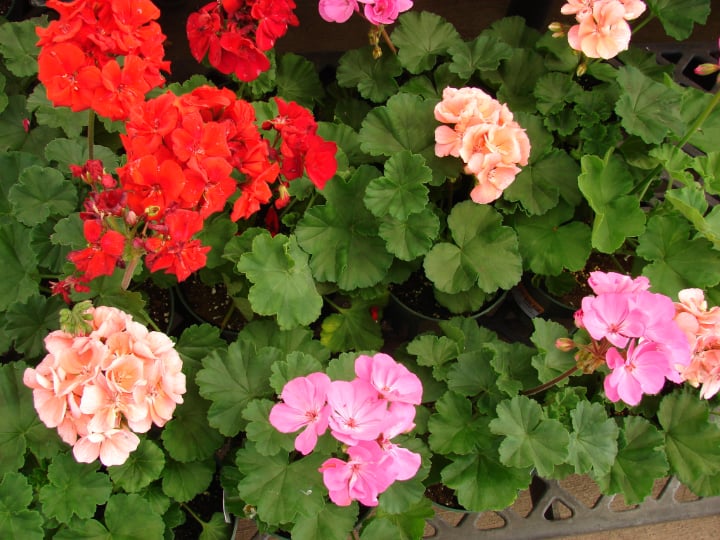
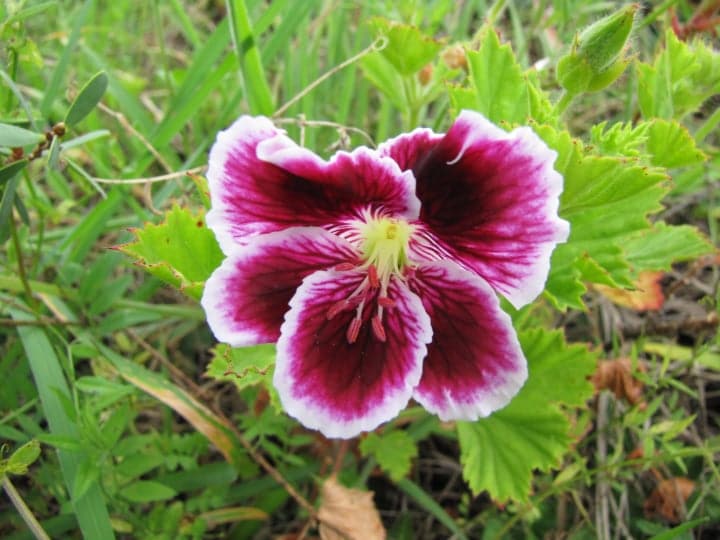
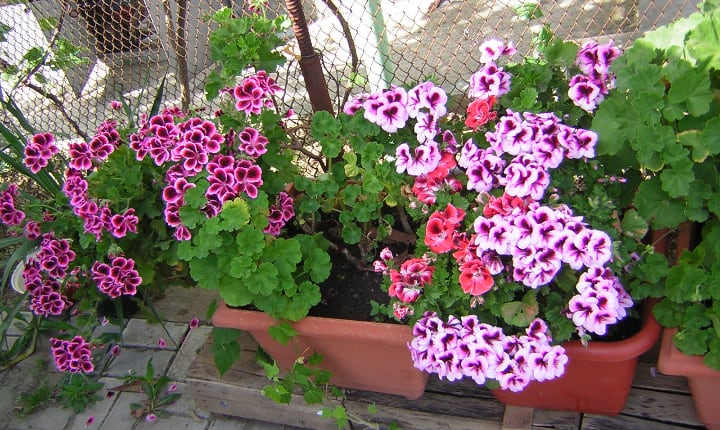
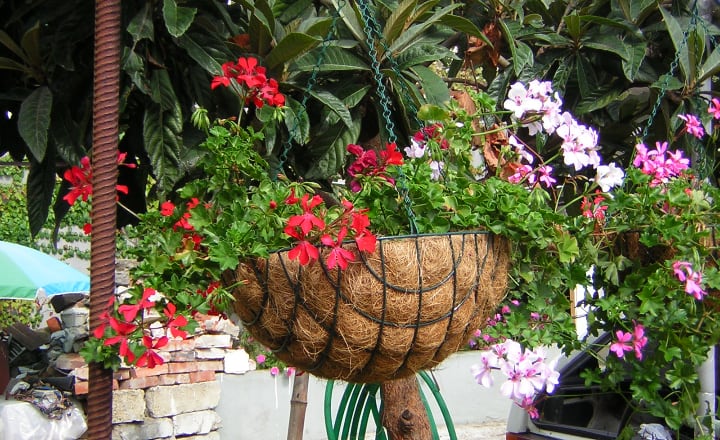
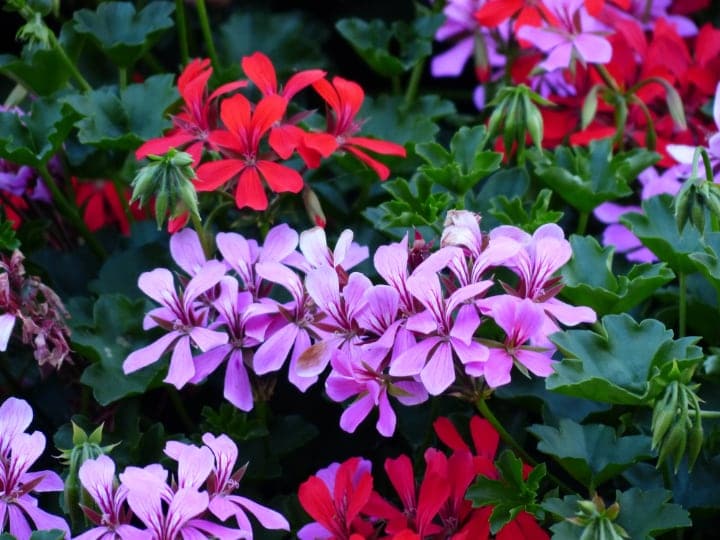
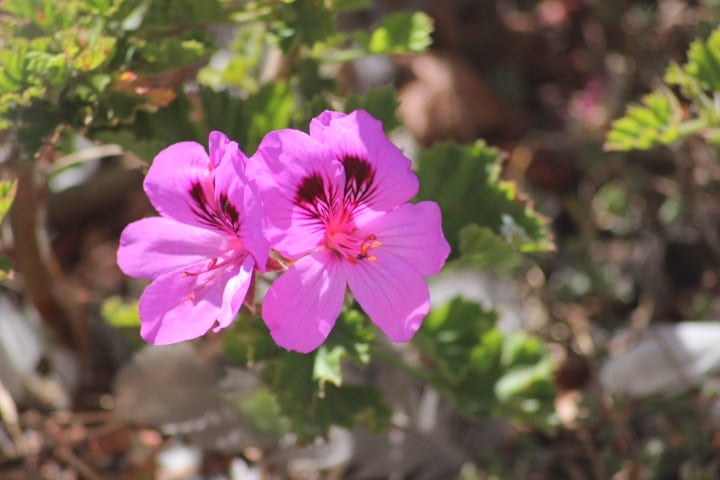
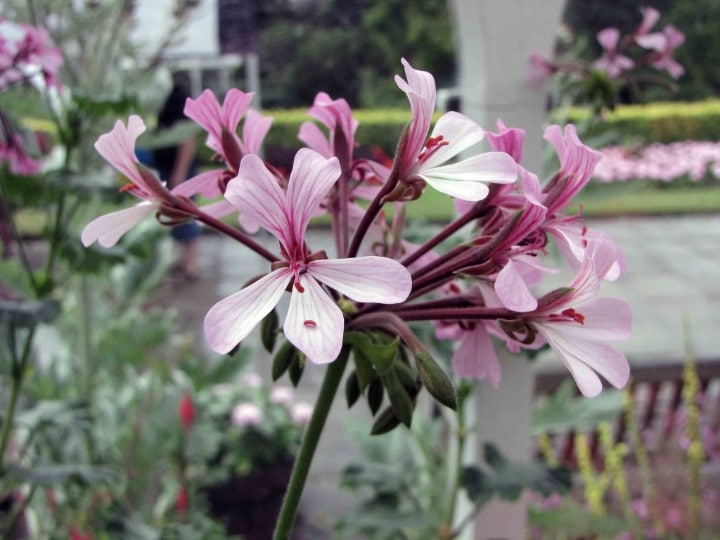
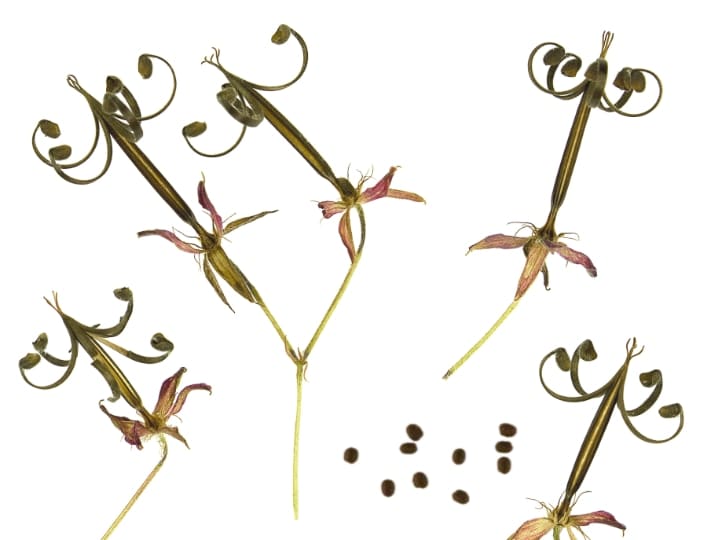
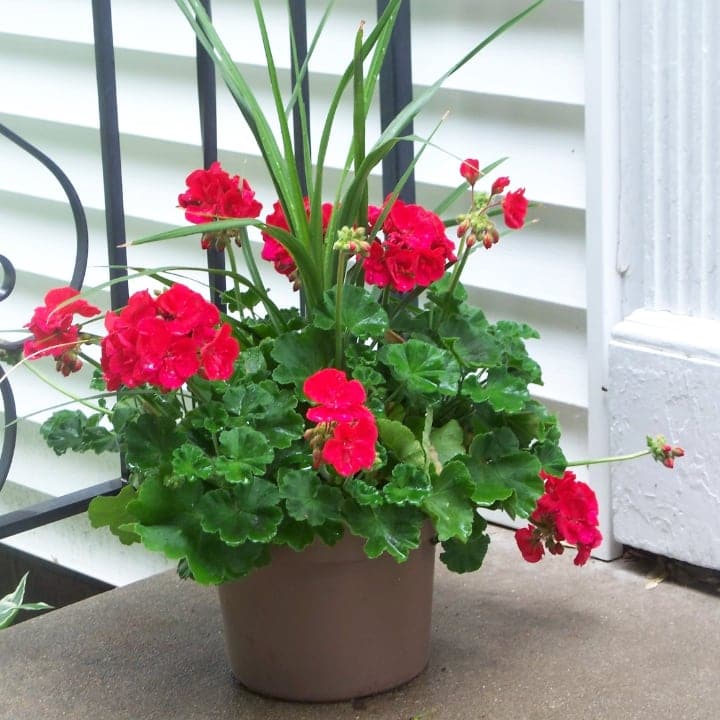
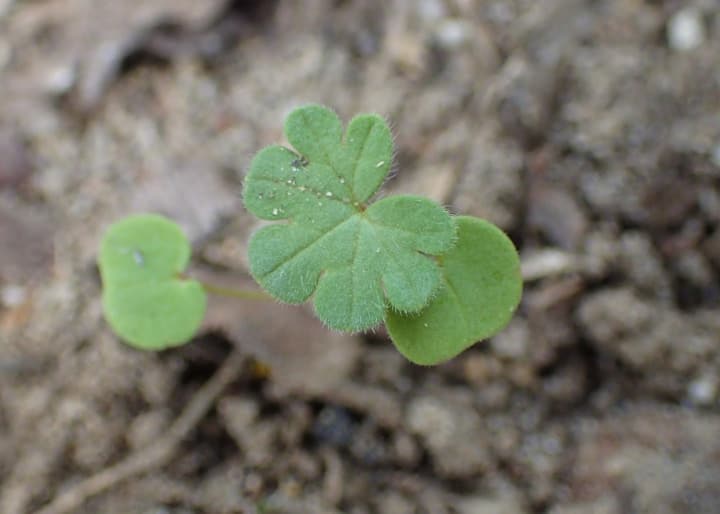
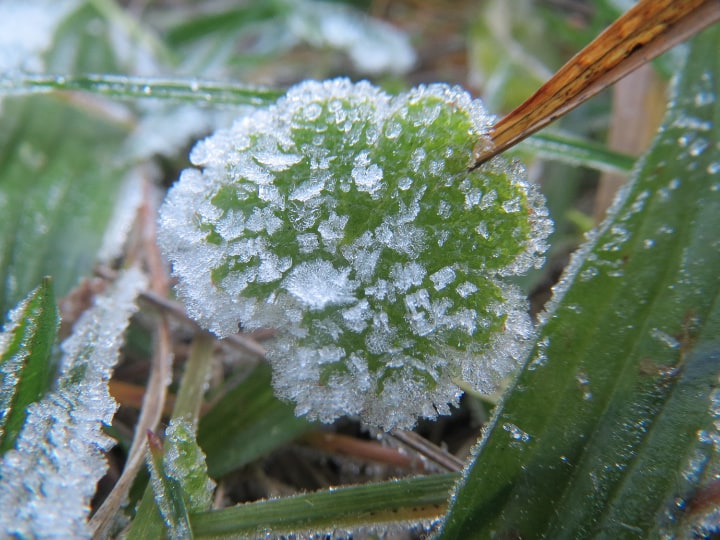
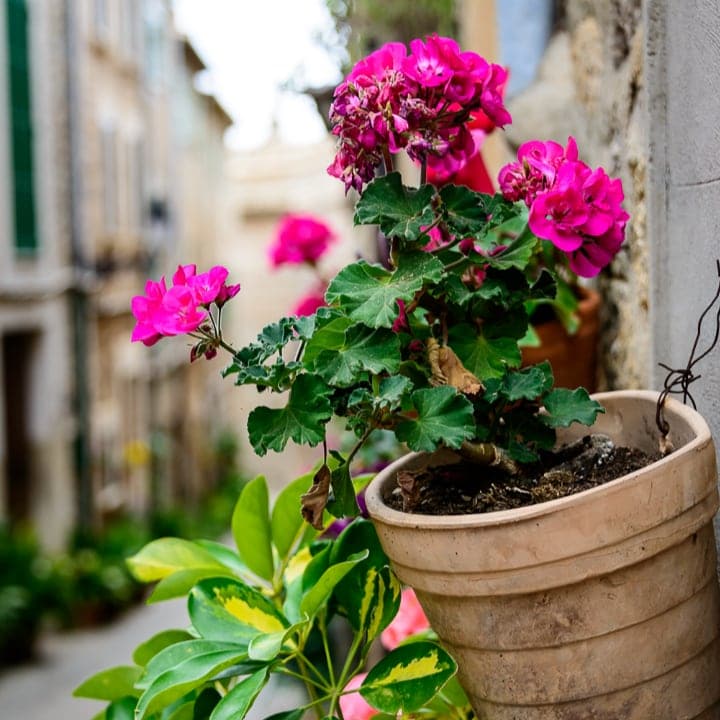
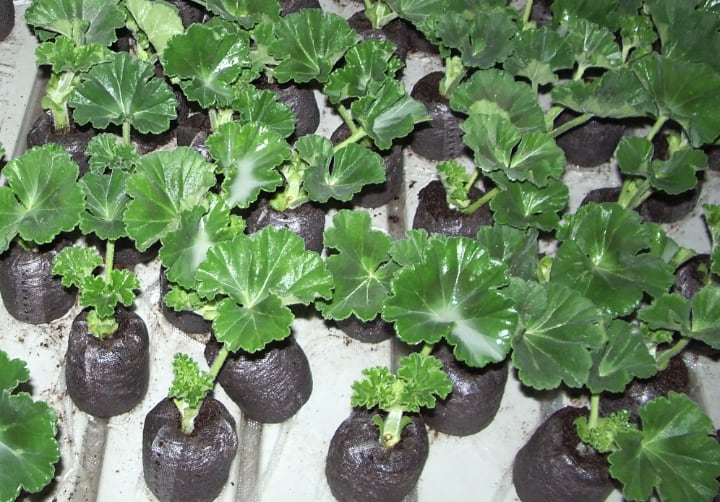
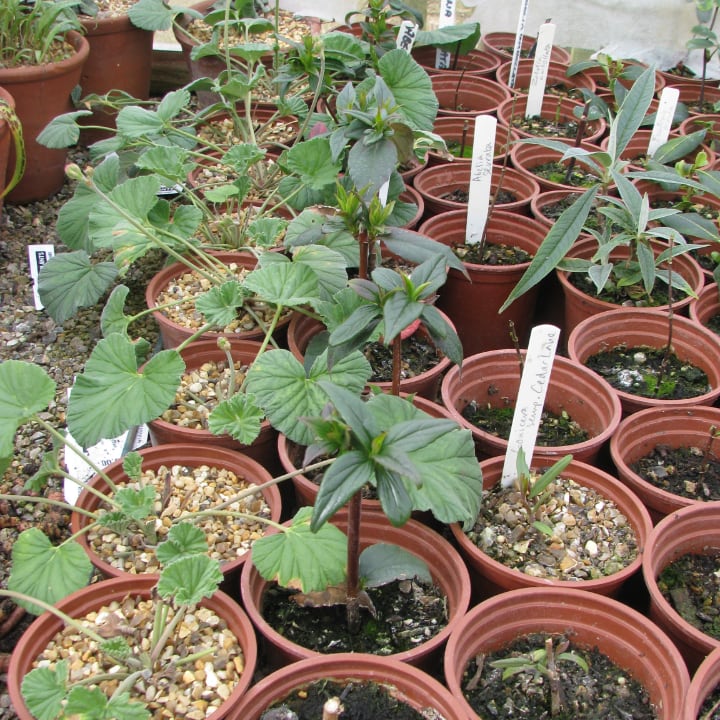
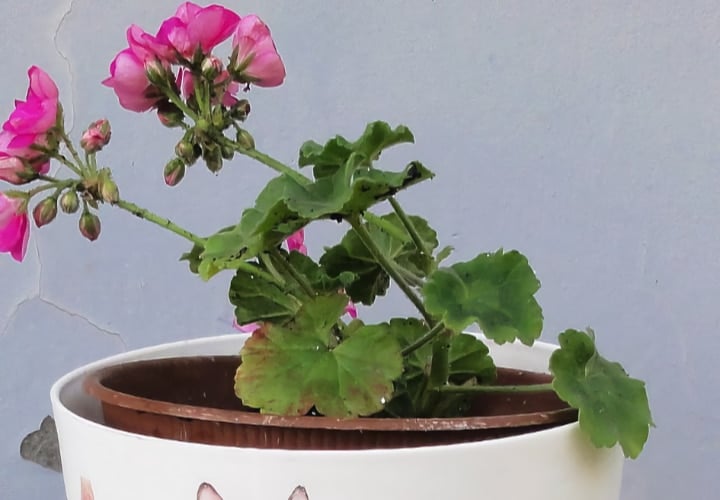
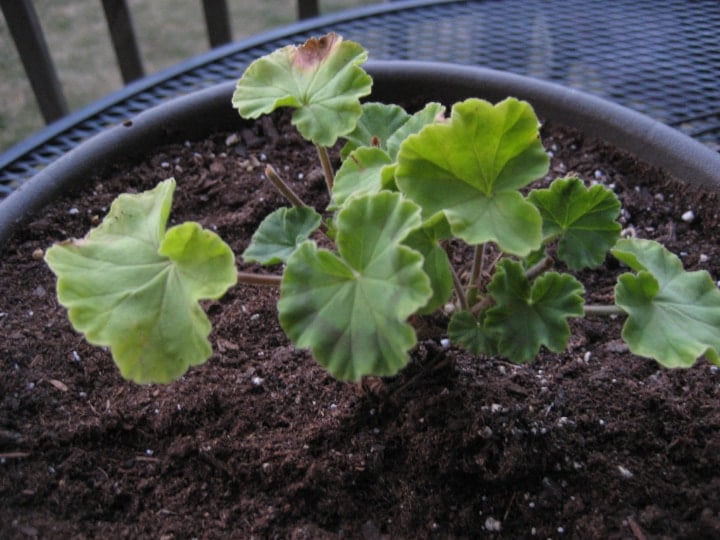
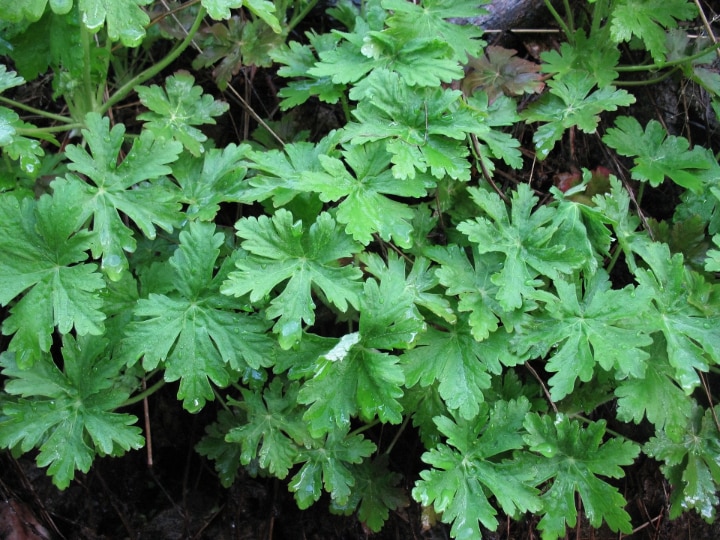
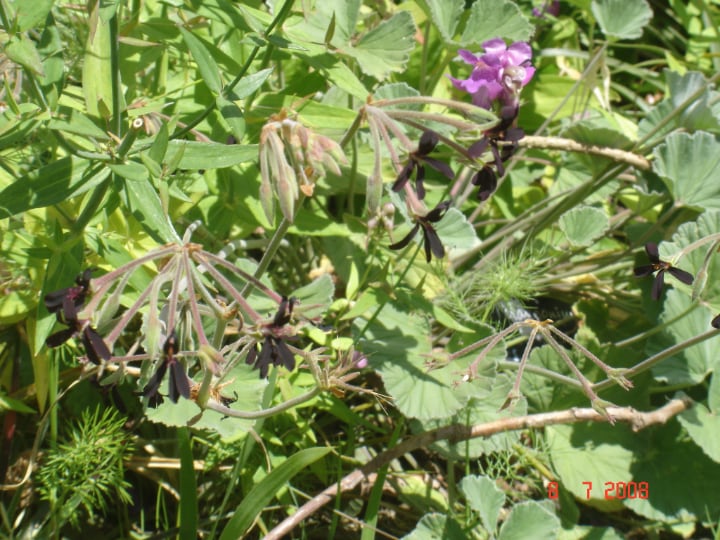
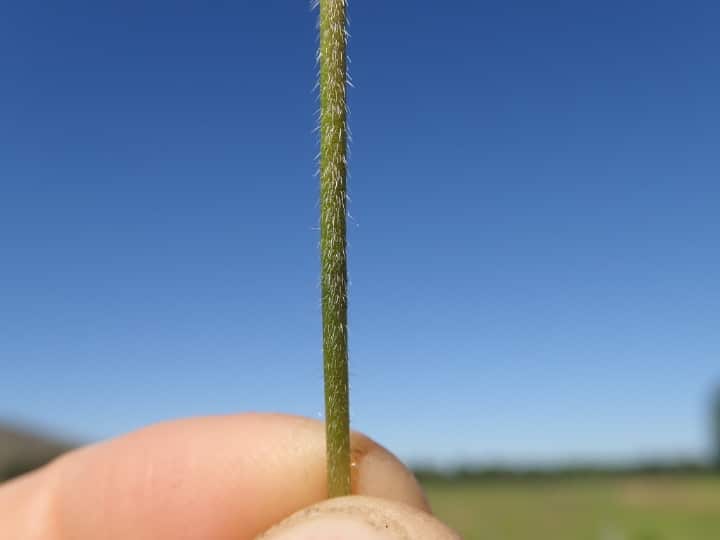
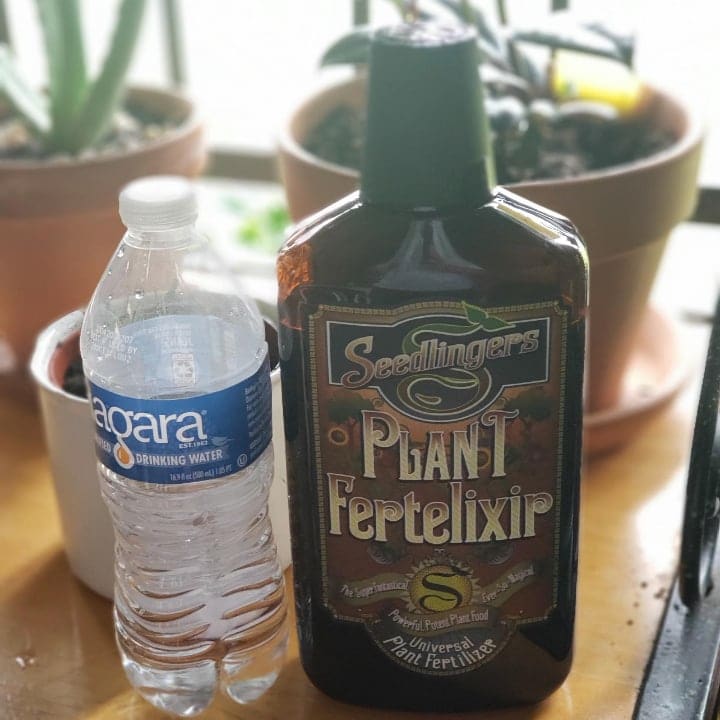
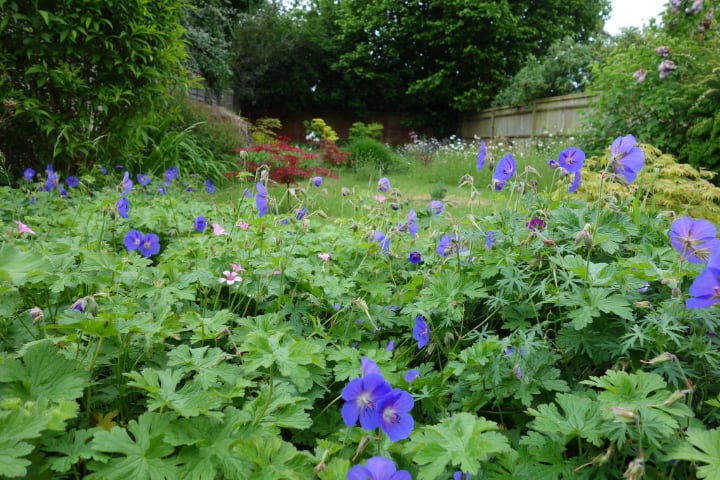
Leave a Reply